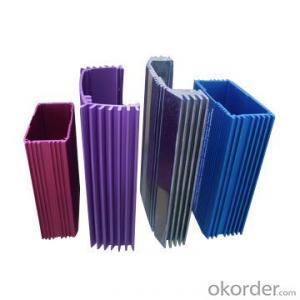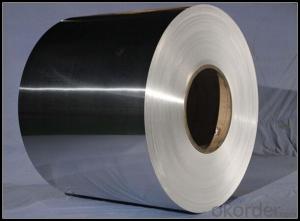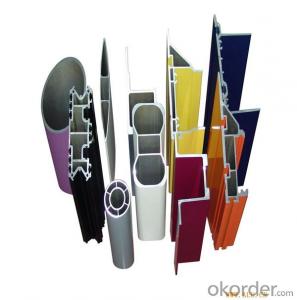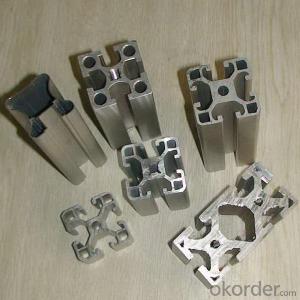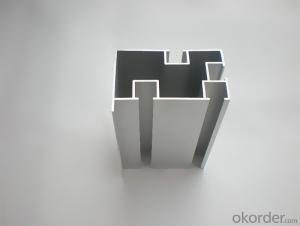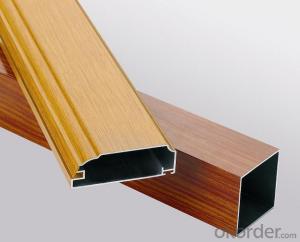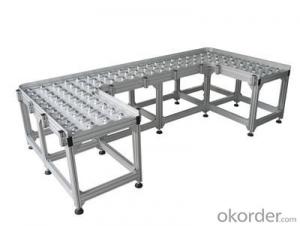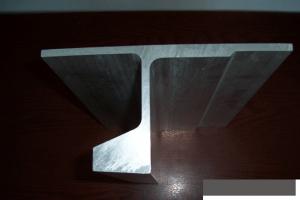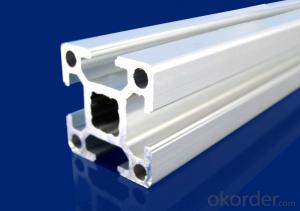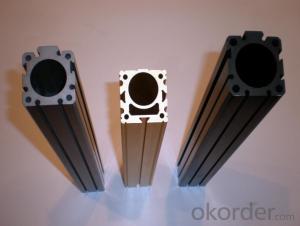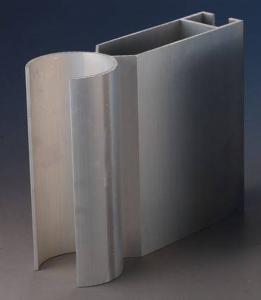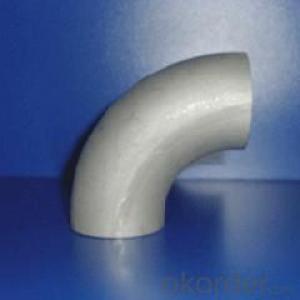Aluminum Extrusion Profiles Los Angeles - 6060, 6061, 6063, 6082 Grade Aluminium Profile Manufacturer
- Loading Port:
- China Main Port
- Payment Terms:
- TT OR LC
- Min Order Qty:
- -
- Supply Capability:
- -
OKorder Service Pledge
Quality Product, Order Online Tracking, Timely Delivery
OKorder Financial Service
Credit Rating, Credit Services, Credit Purchasing
You Might Also Like
Material | Alloy 6063,6061,6005or according to customer’s choice |
Temper | T3, T4, T5, T6 |
Surface | Anodize, electrophoresis, powder coating, PVDF coating, wood grain painting, matted, etc. |
Color | Any colour based on Standard Germany RAL Mark |
Length | Coating 6.5 meters, Anodizing 6.5 meters, Mill finish 5 meters |
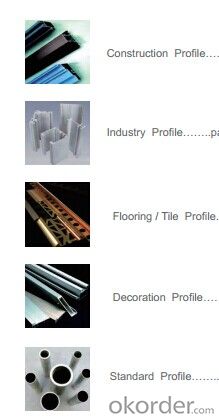
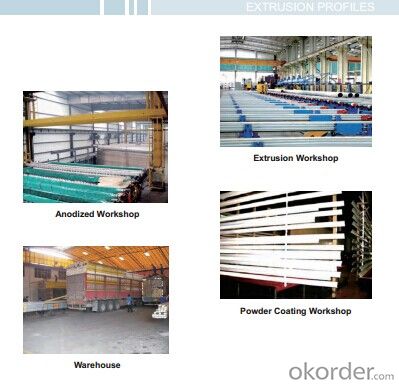
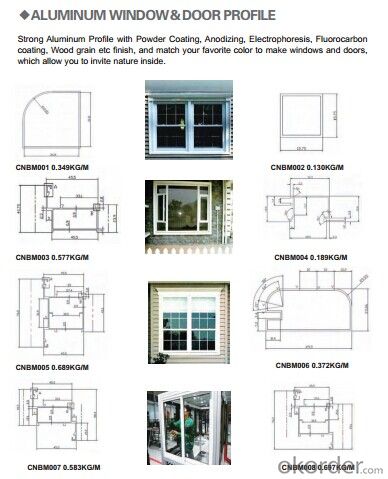
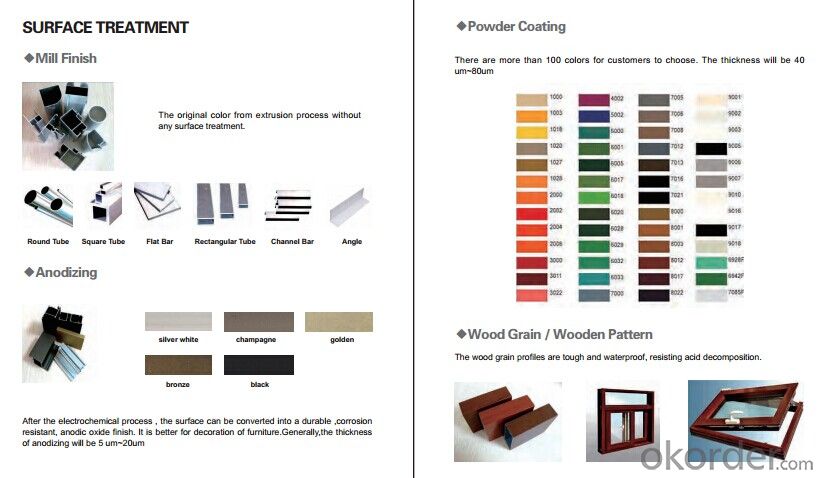
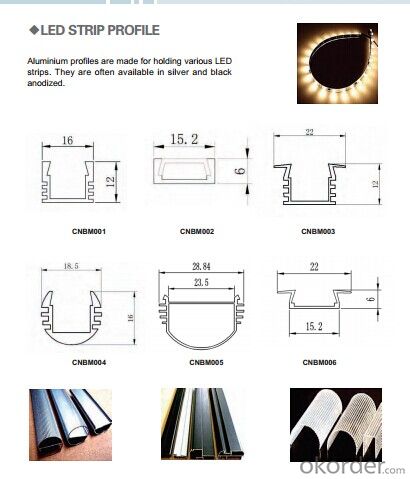
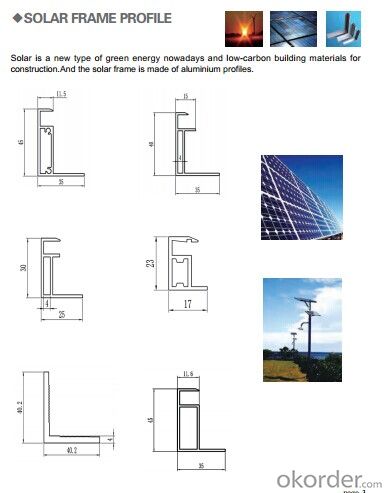
- Q: What are the factors involved in the selection of industrial aluminum profiles?
- Machinability: processability, package, formability, and machinability. Because of the formability and the state, in the selection of aluminum alloy brand, but also need to consider the range of various state of strength, usually the high strength of the material is difficult to shape. The platform should be bent, stretched, deep washed and so on. After finishing, the material has the best formability. On the contrary, the material in the heat treatment state has the worst formability. The cutting of the poor, Aluminum Alloy for molds, machinery parts need cutting better, on the other hand, the low strength of cutting is poor, the mold, machinery parts and other products need cutting, cutting Aluminum Alloy are important factors to consider.Weldability: the weldability of most aluminum alloys is no problem, especially Part 5 series aluminum alloy. It is specially designed for welding consideration. Relatively speaking, it is difficult to weld parts of the 2 and 7 series aluminum alloy.Decorative performance: aluminum used in decoration or some special occasions, need the anodic oxidation of the surface coating processing, to obtain the corresponding color and surface tissue, then the decoration should be a key consideration, in general, good corrosion resistance of the anode material, processing performance, surface treatment coating performance. The performance is very good.
- Q: Are there any materials for aluminum profiles?
- Aluminum material can be classified as follows:By purpose1. architectural aluminum profiles (divided into two types of doors and windows and curtain wall)2. radiator aluminum profiles.3. general industrial aluminum: mainly used in the manufacture of industrial production, such as automation equipment, covering the skeleton and the custom mold machinery and equipment according to their own requirements, such as assembly line conveyor belt, hoisting machine, glue machine, testing equipment, shelves and so on, the electrical machinery industry and clean room with.4, rail vehicle structure aluminum alloy profile: mainly used for rail vehicle body manufacturing.5, Mount Aluminum profiles, made of aluminum alloy frame, mounted a variety of exhibitions and decorative paintings.
- Q: This question asks about the various types of insulation panels that utilize aluminum profiles in their construction.
- <p>Insulation panels made from aluminum profiles come in several types, each with specific characteristics and applications. These include: 1. Sandwich Panels, which consist of two aluminum sheets with a core material like polyurethane, rockwool, or polystyrene. 2. Composite Panels, which combine aluminum with other materials for enhanced properties. 3. Structural Insulated Panels (SIPs), used in construction for their thermal efficiency and strength. 4. Cold Storage Panels, designed to maintain low temperatures in refrigeration units. 5. Acoustic Insulation Panels, which reduce noise transfer. Each type is chosen based on the required thermal, acoustic, and structural performance.</p>
- Q: Are aluminum profiles suitable for use in the defense industry?
- Yes, aluminum profiles are suitable for use in the defense industry. Aluminum is a lightweight, yet strong material that offers excellent corrosion resistance and high durability. It is commonly used in the defense industry for applications such as military vehicles, aircraft structures, and weapon systems. Additionally, aluminum profiles can be easily customized and fabricated to meet specific requirements, making them a versatile choice for defense applications.
- Q: Explain the various methods used to install aluminum profiles in construction projects.
- <p>There are several methods to install aluminum profiles in construction: 1. Bolting: Aluminum profiles can be secured with bolts and nuts, providing a strong and adjustable connection. 2. Welding: For permanent and rigid connections, aluminum profiles can be welded together. 3. Adhesive bonding: Using specialized adhesives, aluminum profiles can be bonded together for a secure fit. 4. Clipping: Some profiles come with clip-on connectors that allow for quick and easy assembly. 5. Screwing: Self-tapping screws can be used to join aluminum profiles, providing a strong hold without the need for pre-drilled holes. 6. Mortise and tenon: A traditional woodworking joint that can be adapted for aluminum profiles, creating a tight and secure fit. Each method has its advantages and is chosen based on the specific requirements of the construction project.</p>
- Q: Is it possible to utilize aluminum profiles as a material for exterior wall cladding?
- <p>Yes, aluminum profiles are commonly used for exterior cladding due to their durability, low maintenance, and resistance to corrosion. They are lightweight, easy to install, and can be designed in various shapes and sizes to suit architectural requirements. Additionally, aluminum profiles offer excellent weather resistance and can be painted or anodized to provide a protective finish and aesthetic appeal.</p>
- Q: Are there any differences between aluminum alloy and aluminum alloy?
- Aluminum alloy refers to the material, aluminum alloy refers to the productIt's like the difference between gold and gold
- Q: Are aluminum profiles suitable for electrical conductivity applications?
- No, aluminum profiles are not suitable for electrical conductivity applications.
- Q: How do aluminum profiles perform in terms of sound insulation?
- Aluminum profiles generally have poor sound insulation properties compared to other materials such as wood or uPVC. This is because aluminum is a relatively lightweight and thin material, which allows sound waves to easily pass through it. Additionally, aluminum profiles often have a hollow structure, further reducing their ability to block or absorb sound. However, it is important to note that the overall sound insulation performance of a window or door system depends on various factors such as the thickness of the glass, the quality of the seals, and the installation method. To enhance the sound insulation capabilities of aluminum profiles, manufacturers may incorporate additional features like double or triple glazing, laminated glass, or acoustic seals. In conclusion, while aluminum profiles alone may not provide optimal sound insulation, they can be combined with other elements to improve their performance. If sound insulation is a significant concern, it is advisable to consider alternative materials that offer better inherent sound insulation properties.
- Q: This question asks for an explanation of the various techniques employed in the manufacturing process to create aluminum profiles.
- <p>Aluminum profiles are produced using several manufacturing methods, primarily including extrusion, casting, and rolling. Extrusion is the most common method, where aluminum is heated and forced through a die to take on a desired shape. Casting involves pouring molten aluminum into molds to create specific forms. Rolling is used to produce flat sheets or plates by passing aluminum between rollers. Other methods include forging, which shapes aluminum by applying compressive force, and machining, which involves cutting and shaping aluminum with tools. Each method has its applications depending on the desired profile shape, strength, and surface finish.</p>
Send your message to us
Aluminum Extrusion Profiles Los Angeles - 6060, 6061, 6063, 6082 Grade Aluminium Profile Manufacturer
- Loading Port:
- China Main Port
- Payment Terms:
- TT OR LC
- Min Order Qty:
- -
- Supply Capability:
- -
OKorder Service Pledge
Quality Product, Order Online Tracking, Timely Delivery
OKorder Financial Service
Credit Rating, Credit Services, Credit Purchasing
Similar products
Hot products
Hot Searches
Related keywords
